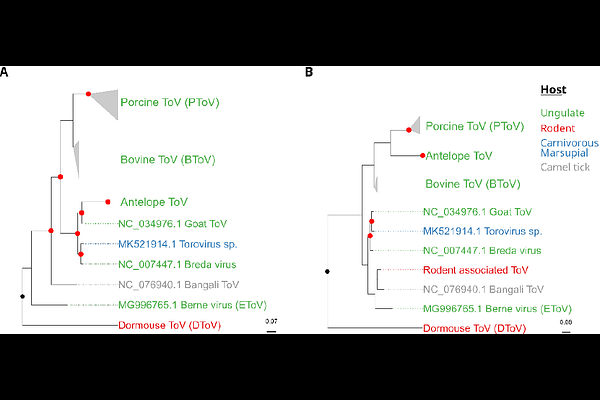Rodents as Potential Reservoirs for Toroviruses

Rodents as Potential Reservoirs for Toroviruses
Buigues Bisquert, J.; Vinals, A.; Martinez-Recio, R.; Monros, J. S.; Sanjuan, R.; Cuevas, J. M.
AbstractEmerging zoonotic viruses pose a significant threat to global health. The order Nidovirales includes diverse viruses, such as coronaviruses, which are well known for their zoonotic potential. Toroviruses are a less-studied genus within Nidovirales primarily associated with gastrointestinal diseases in ungulates, although some evidence suggests their presence in humans. In this study, we report the discovery of a novel torovirus from a fecal sample of a dormouse (Eliomys quercinus) in Spain, which we named Dormouse torovirus (DToV). This represents the first complete genome of a rodent-associated torovirus. The 28,555-nucleotide genome encodes the six characteristic torovirus open reading frames, but these exhibit low amino acid sequence identity (44.3-86.3%) compared to other toroviruses, indicating that DToV likely represents a new viral species. Bayesian analysis of the ORF1b suggests that DToV diverged from known toroviruses approximately 1300 years ago. Moreover, the basal phylogenetic position of DToV suggests that rodents may represent a reservoir for this viral genus. Our findings expand the known torovirus host range, underscore their potential for cross-species transmission, and highlight the importance of continued surveillance of wildlife viruses.